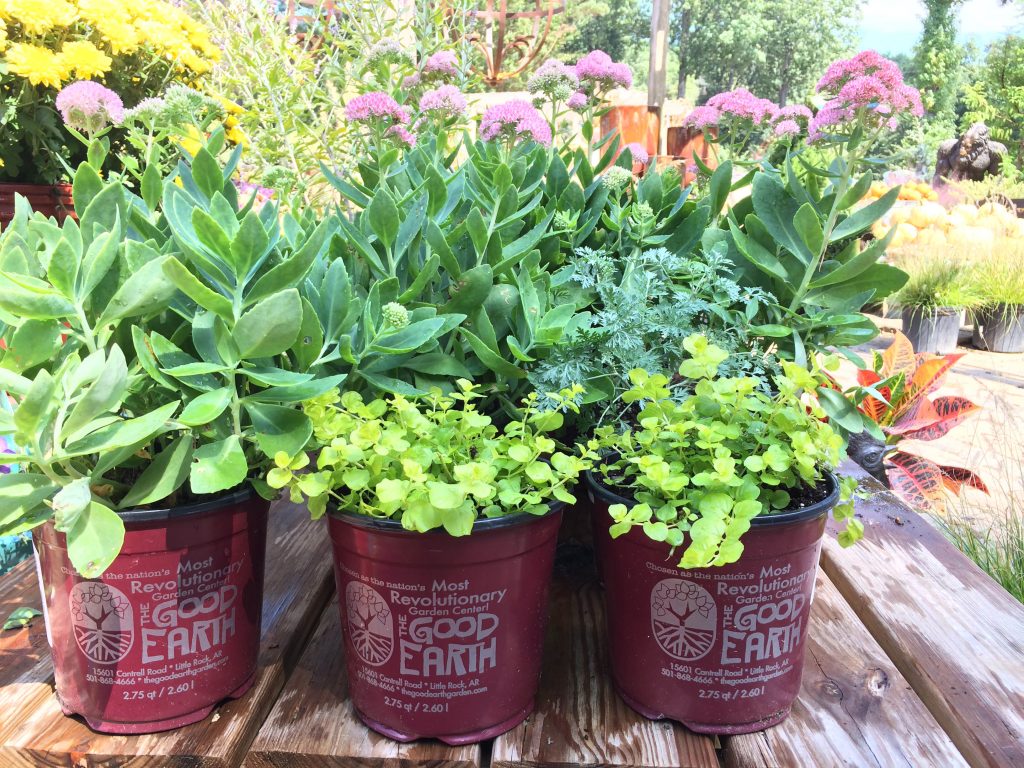How to Successfully Divide Perennials

Did you know that your existing beloved perennials could be divided up into tens of new plants? Why would you do this? Perennial plants are happiest, healthiest and most productive (which means more flowers and growth!) when they are young and have room to grow. Dividing a large clump of perennials into smaller individual plants that can be spread out or shared with friends is a great way to rejuvenate a perennial garden. Plus, it’s not difficult and is really economical.
Ideally, perennial division should be done while the plant is looking good and performing well, such as at the end of the plants’ peak season. However, sometimes you don’t notice that the time is right until the plant has stopped producing as many blooms or has started thinning in the middle. Better late than never though!
First, locate your perennials. Although perennial division can be done almost any time of year here in Arkansas, fall and spring divisions are usually the most successful because the soil is warm, but the air temperatures are cool, which means less stress and quicker establishment for the newly divided plant. If you plan to wait until spring, locate the perennials in the fall before they are completely dormant. Fall blooming perennials can be divided in the spring to maximize fall bloom enjoyment. For fall divisions, after identifying the outside margins of the root system, cut the perennial back to ease the digging and division processes. Timing of division does matter for some perennials; for example, only divide bleeding heart in the spring and gallium in the fall.
Next, dig up as much of the root system as possible to minimize root damage. If the top growth of the plant is still present, and the drip line is identifiable, dig just outside the drip line. Dig a trench around the plant then make downward and inward angled cuts, ideally with a sharp shovel. Clean cuts are better for plant roots than ragged cuts with a dull shovel. Very large clumps may have to be initially divided in ground by halving or quartering the perennial, with further divisions being done after the partially divided clumps have been removed from the ground. Take note of how deep the perennials are planted so they can be replanted at the same depth. For example, if the eyes of the plant are an inch below the soil line, plant them back at the same level.
Now to divide the plants! This next step can be hard to do; resist the urge to start messing with the roots with you hands! Use a large, sharp butcher knife or pruning shears to cut the clump into sections, leaving a good amount of root, and hopefully a shoot intact. A handsaw may be necessary for thicker rhizomes, tubers and woody root systems, while some perennials can be divided by hand. Wear gloves to protect your hands; some perennials have sap that may irritate the skin.
How big should the clumps be? Clumps that are less than 25% of the original plant will grow best and have longer lasting blooms. For example, a perennial that is divided just in half will more than double in size within one growing season, and will need dividing again. Clumps that are too small might not have enough of a root system to support new growth so don’t get too crazy dividing. Keep plants cool and moist during the process. Covering roots with newspaper then dampening the paper will keep the roots from loosing too much moisture before you can transplant them. If the roots do dry out before re-planting, soak them in water for an hour before planting. Keep the divisions in a shaded location to further help minimize moisture loss and potential stress.
This process provides a good time to address soil drainage issues, add organic matter, look for grubs; basically look at soil conditions in general and address issues. Adding organic matter such as Cotton Burr Compost will add oxygen, improve drainage and increase the fertility of the soil. Using Good Earth brand Jump Start will aid in quick root establishment; mix with soil when transplanting. Transplant into a garden space with appropriate sun exposure.
Some of the many perennials that benefit from being divided include yarrow, bleeding heart, gayfeather, creeping jenny, sedum, dead nettle, foam flowers, coral bells, hellebores, ajuga, astilbe, phlox, iris, cannas, bergenia, anemonees, daylilies, hostas, stokesia, lamb’s ear, huechera, ornamental grasses and ferns. Although most perennials respond well and even need to be divided, some perennials should be left undisturbed. Avoid dividing peonies, lavender, goat’s beard, swamp milkweed, baptisia australis, candytuft, Russian sage, garden sage, rosemary, and euphorbia.
Be brave; most perennials are tough and will grow better after dividing!